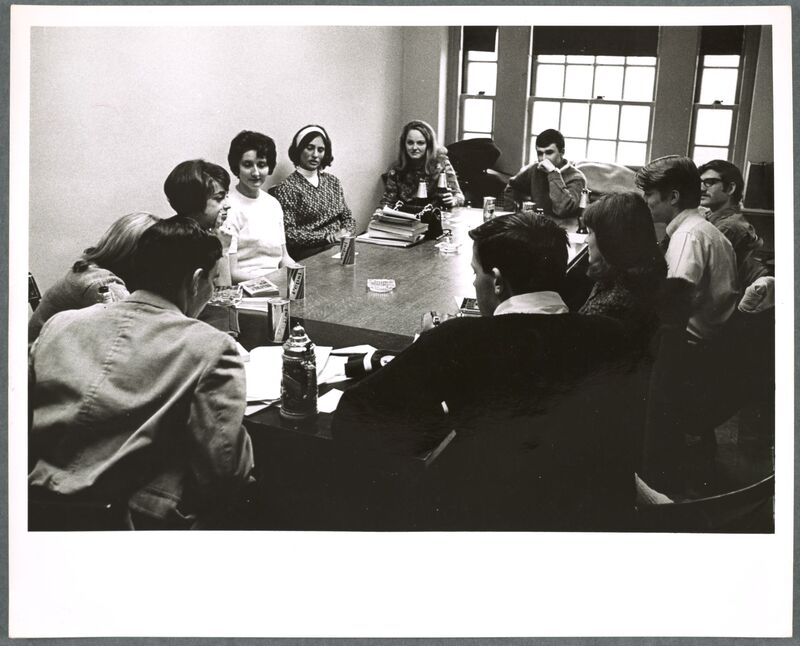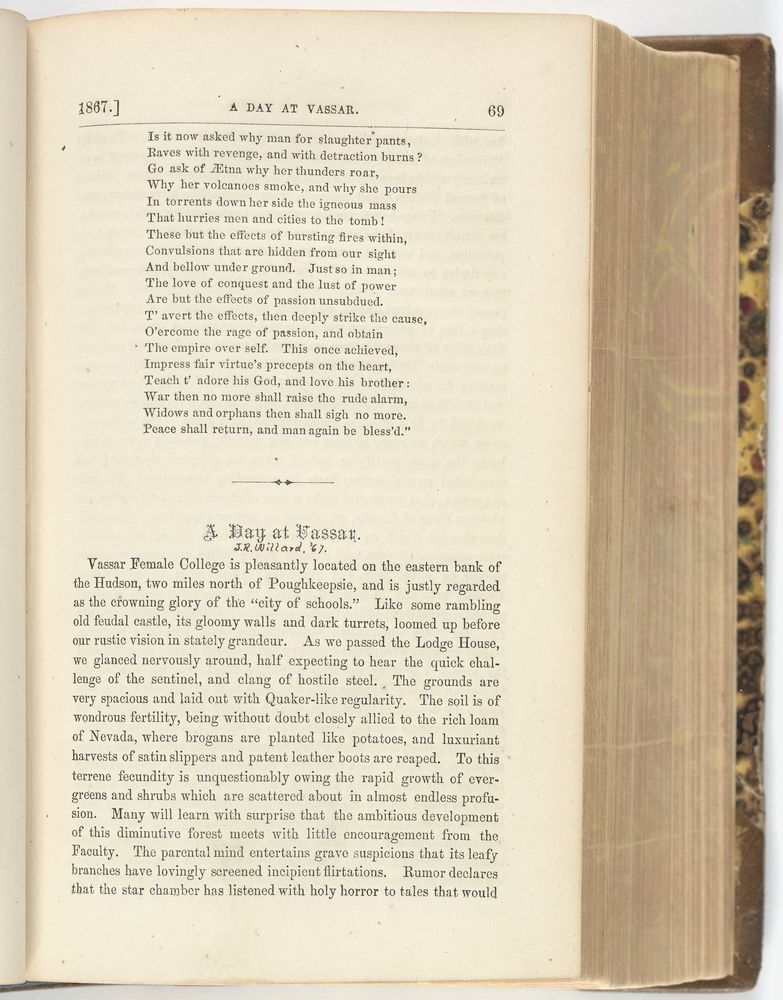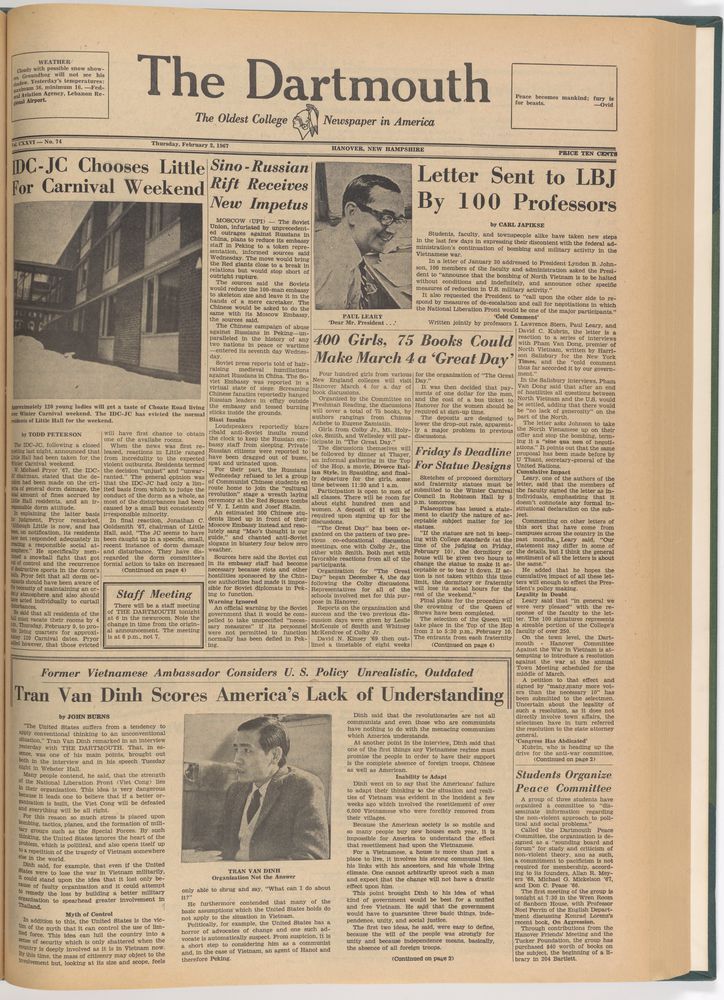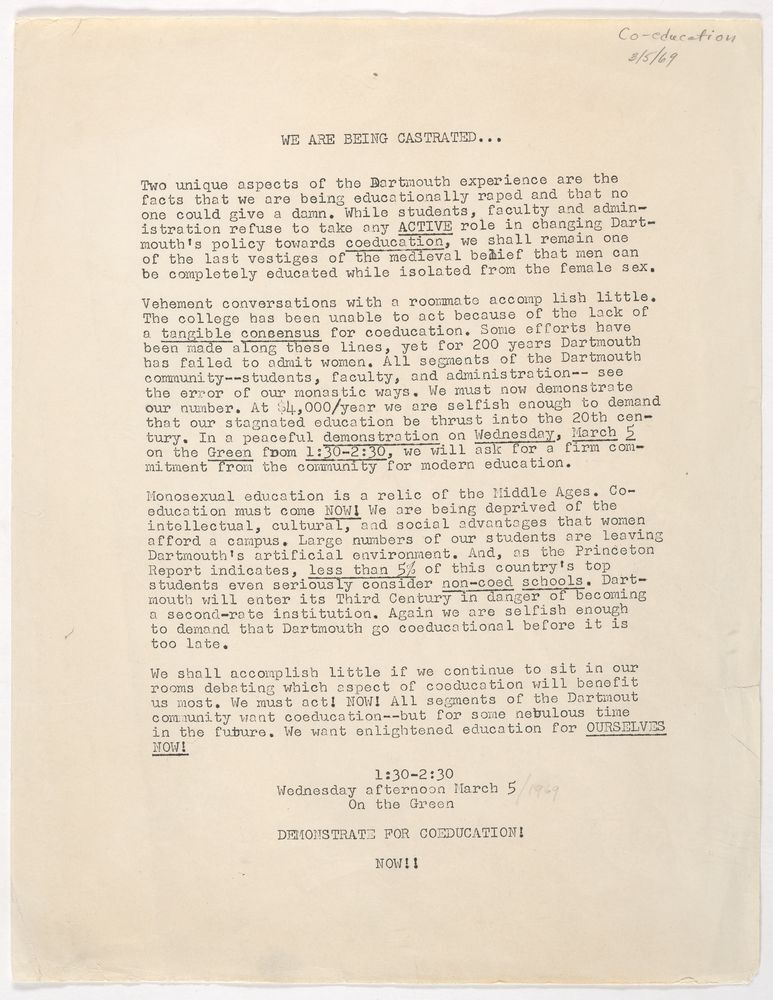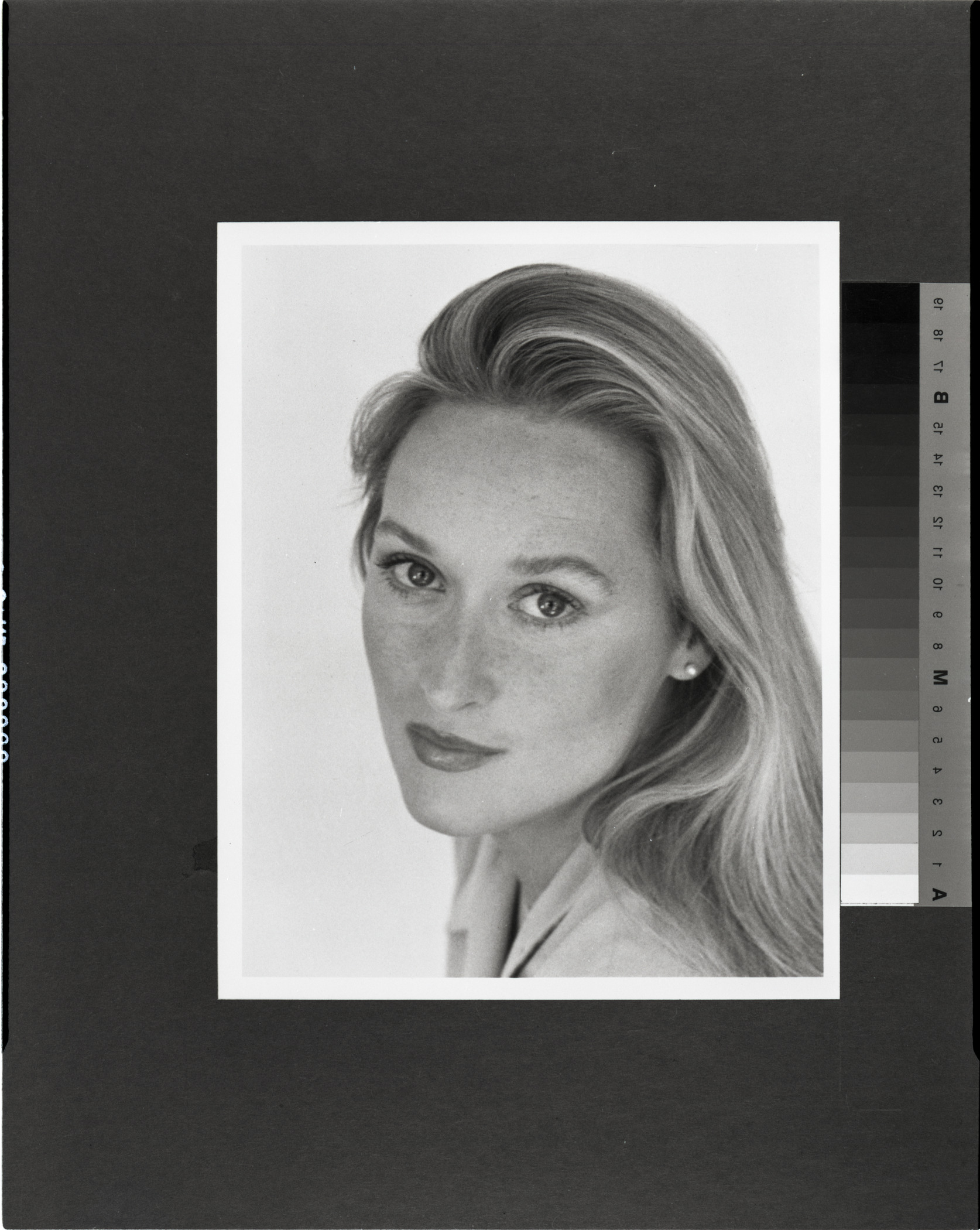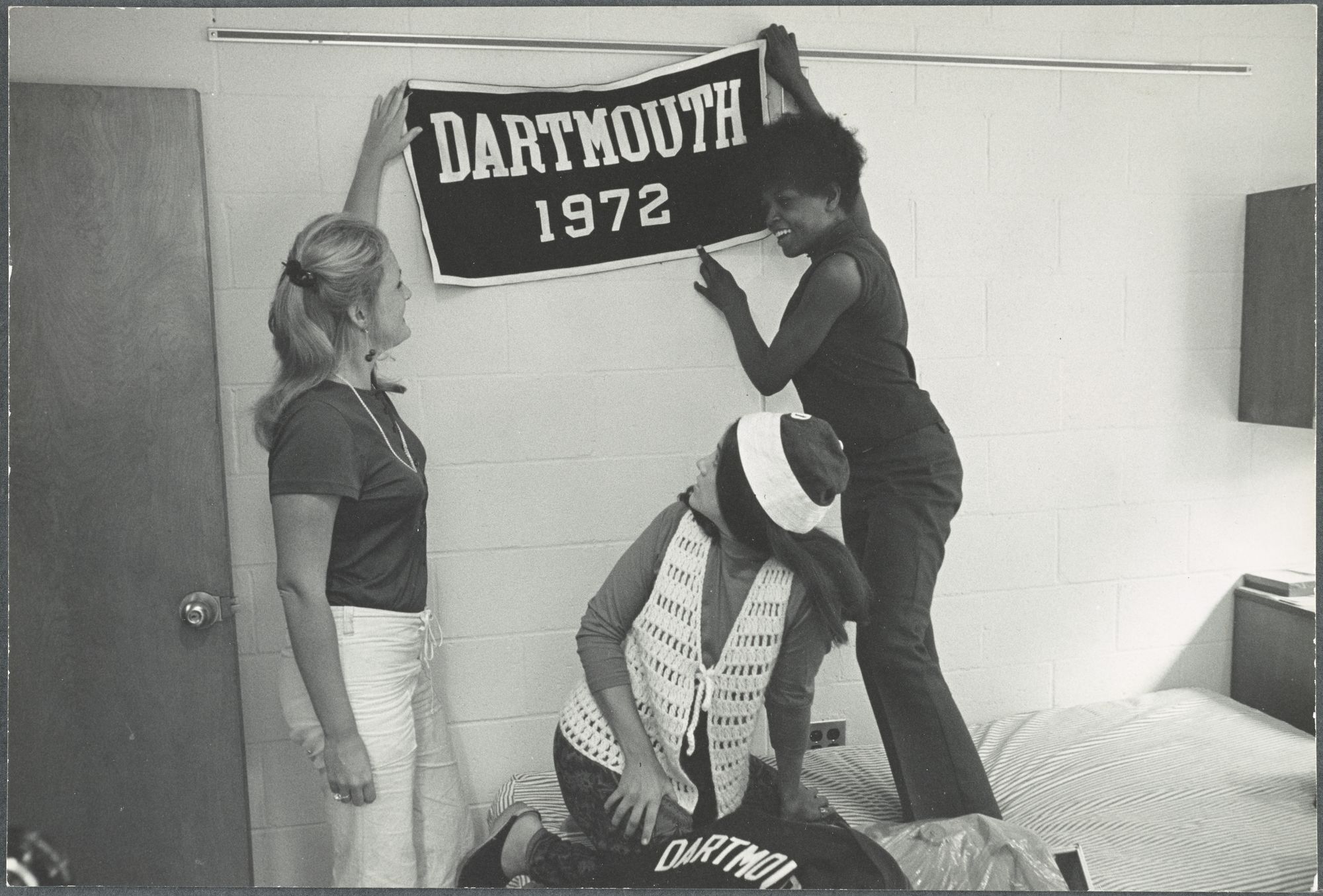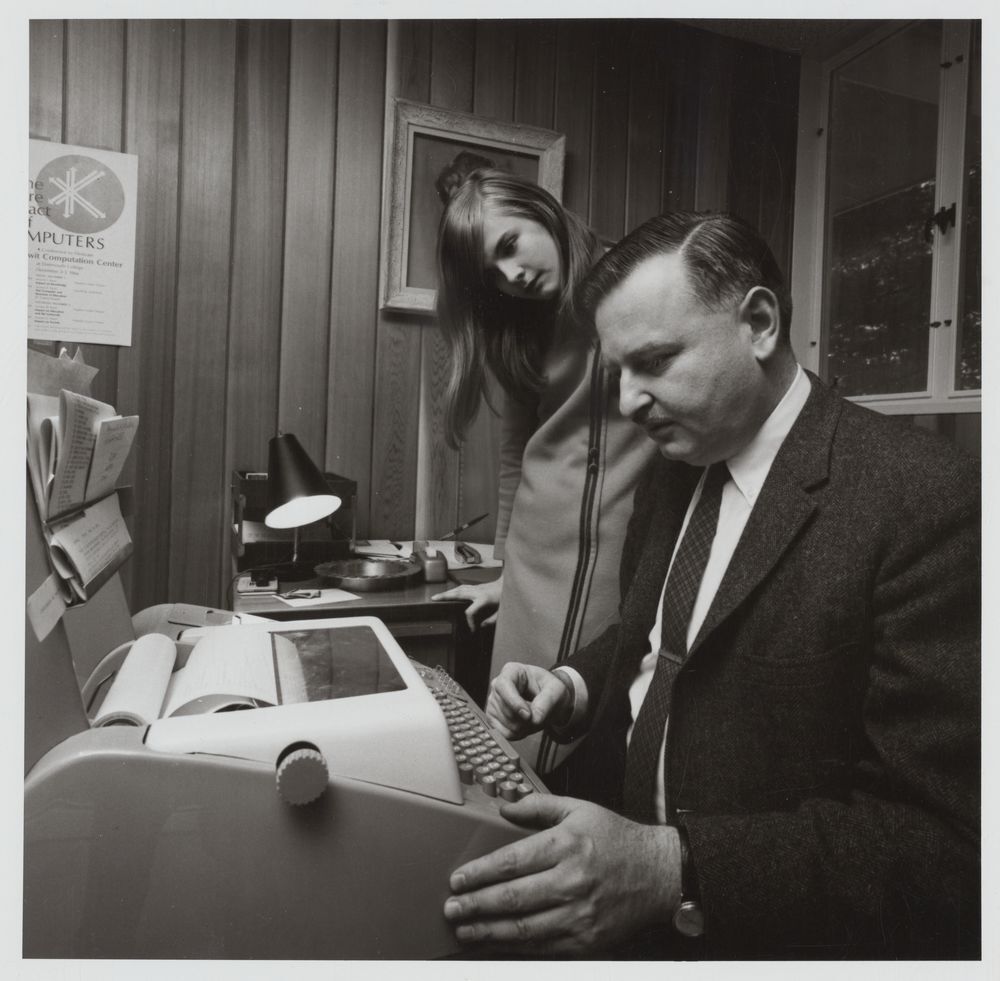All Men All the Time: Dartmouth Before Coeducation
The earliest reference to coeducation at Dartmouth that we have found is in 1867. Over the next 100 years the discussion of coeducation would come and go with varying opinions, both pro and con, expressed by the students and alumni. The 1960s brought real agitation, primarily by students, to admit women to the male bastion that was Dartmouth.
While students' motivations were sometimes questionable, the institution was also being pushed by other factors, among these were everything from the women’s liberation movement to economics. The fact that Princeton and Yale went coed in 1969 also played a role. While some students called for protests, others put pressure on the College administration by hosting co-educational academic programs.
Previous: Introduction -- Next: The Writing on the Wall: President Kemeny Takes a Vote

